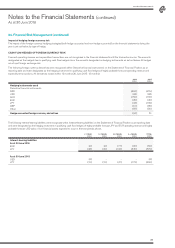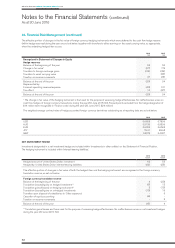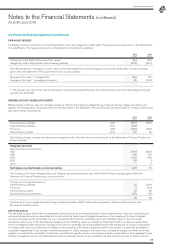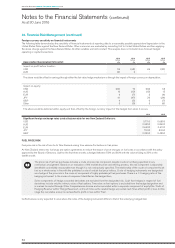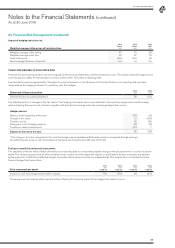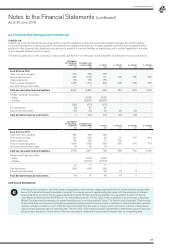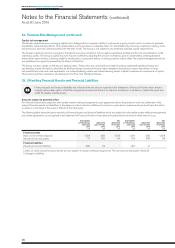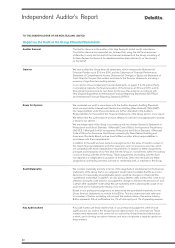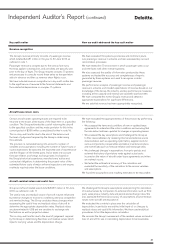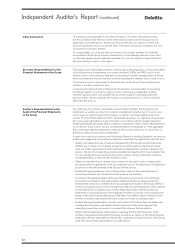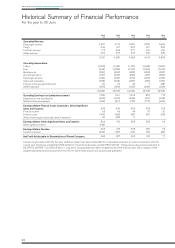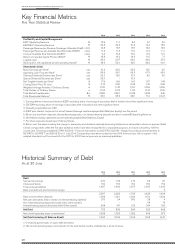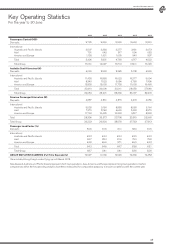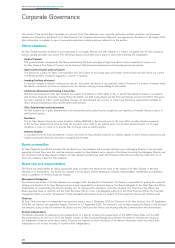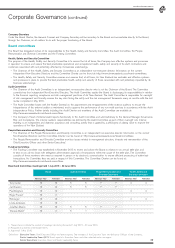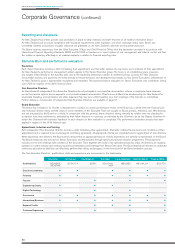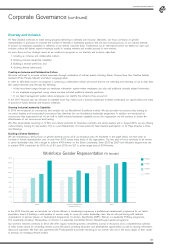Air New Zealand 2016 Annual Report Download - page 43
Download and view the complete annual report
Please find page 43 of the 2016 Air New Zealand annual report below. You can navigate through the pages in the report by either clicking on the pages listed below, or by using the keyword search tool below to find specific information within the annual report.
Independent Auditor’s Report (continued)
41
Key audit matter How our audit addressed the key audit matter
Revenue recognition
The Group’s revenue primarily consists of passenger revenue
which totalled $4,481 million in the year to 30 June 2016 as
outlined in note 1.
Passenger revenue is complex due to the various fare rules
that may apply to a transaction, and as tickets are typically sold
prior to the day of flight. The Group requires complex IT systems
and processes to correctly record these sales as transportation
sales in advance and then as revenue when flights occur.
We have included revenue recognition as a key audit matter due
to the significance of revenue to the financial statements and
the substantial dependence on complex IT systems.
We have evaluated the systems, processes and controls in place
over passenger revenue in advance and also assessed key account
reconciliation processes.
We have tested the IT environment in which passenger sales occur
and interfaces with other relevant systems.
We also assessed the quality of information produced by these
systems and tested the accuracy and completeness of reports
generated by these systems and used to recognise or defer
passenger revenue.
We performed an analysis of passenger revenue and passenger
revenue in advance and created expectations of revenue based on our
knowledge of the Group, the industry and key performance measures,
including airline capacity and revenue per available seat kilometre.
We have compared this to the Group’s revenue and obtained
appropriate explanations for significant differences.
We are satisfied revenue has been appropriately recognised.
Aircraft lease return costs
Certain aircraft under operating leases are required to be
returned to the lessor at the expiry of the lease term in a specified
condition. The Group estimates the cost of returning the aircraft
to the specified condition and has made provision for this in the
current period of $295 million as explained further in note 16.
This is a key audit matter due to the size of the balance and
the level of judgement required by the Group in determining
the estimate.
The provision is calculated taking into account a number of
variables and assumptions including the number of future hours or
cycles expected to be operated, the expected cost of maintenance
and the lifespan of life-limited parts. It also takes into account
forecast inflation and foreign exchange rates. It is based on
the Group’s historical experience, manufacturers’ advice and
contractual obligations in determining the present value of the
estimated future costs of major airframe inspections and engine
overhauls required under the lease conditions.
We have evaluated the appropriateness of the provision by performing
the following:
• We assessed the terms and conditions of new or updated lease
agreements to understand the return conditions and ensuring that
the calculation had been updated for changes in operating leases.
• We assessed the key assumptions and challenged the Group as
to their reasonableness by reviewing internal and external source
documentation such as operating cycle history, supplier costs for
various components, consumables and labour, maintenance plans
and market data such as forecast inflation and exchange rates.
• We challenged changes in assumptions from prior periods and
reviewed the history of provisions made against actual costs
incurred on the return of aircraft under lease agreements and when
an overhaul occurs.
• We tested the arithmetical accuracy of the calculation and
evaluated the sensitivity of the calculation to the various variables
and assumptions.
We found the assumptions and resulting estimates to be reasonable.
Aircraft-residual values and useful lives
Group aircraft and related assets total $3,987 million at 30 June
2016 as outlined in note 11.
The useful lives and residual values of aircraft may be influenced
by external changes to economic conditions, demand, competition
and new technology. The Group considers these changes when
reassessing the useful lives and residual values of aircraft to
determine the appropriate depreciation rates. Residual values
are denominated in US$ and are sensitive to exchange rate
fluctuations as well as projected values.
This is a key audit matter due to the level of judgement required
by the Group in determining fleet lives and residual values which
impacts carrying values and the depreciation charge.
We challenged the Group’s assumptions underpinning the calculation
of residual values by comparison to external information such as third
party sales prices, industry data and period end exchange rates. We
also assessed the historical accuracy of assumptions around residual
values when aircraft are disposed of.
We evaluated the controls in place over the calculation of
depreciation, in particular around the initial input of, or changes to,
residual values and useful life information. We then used analytical
procedures to test the depreciation calculation.
We consider the Group’s assessment of the residual values and useful
lives of aircraft for use in calculating depreciation to be reasonable.


